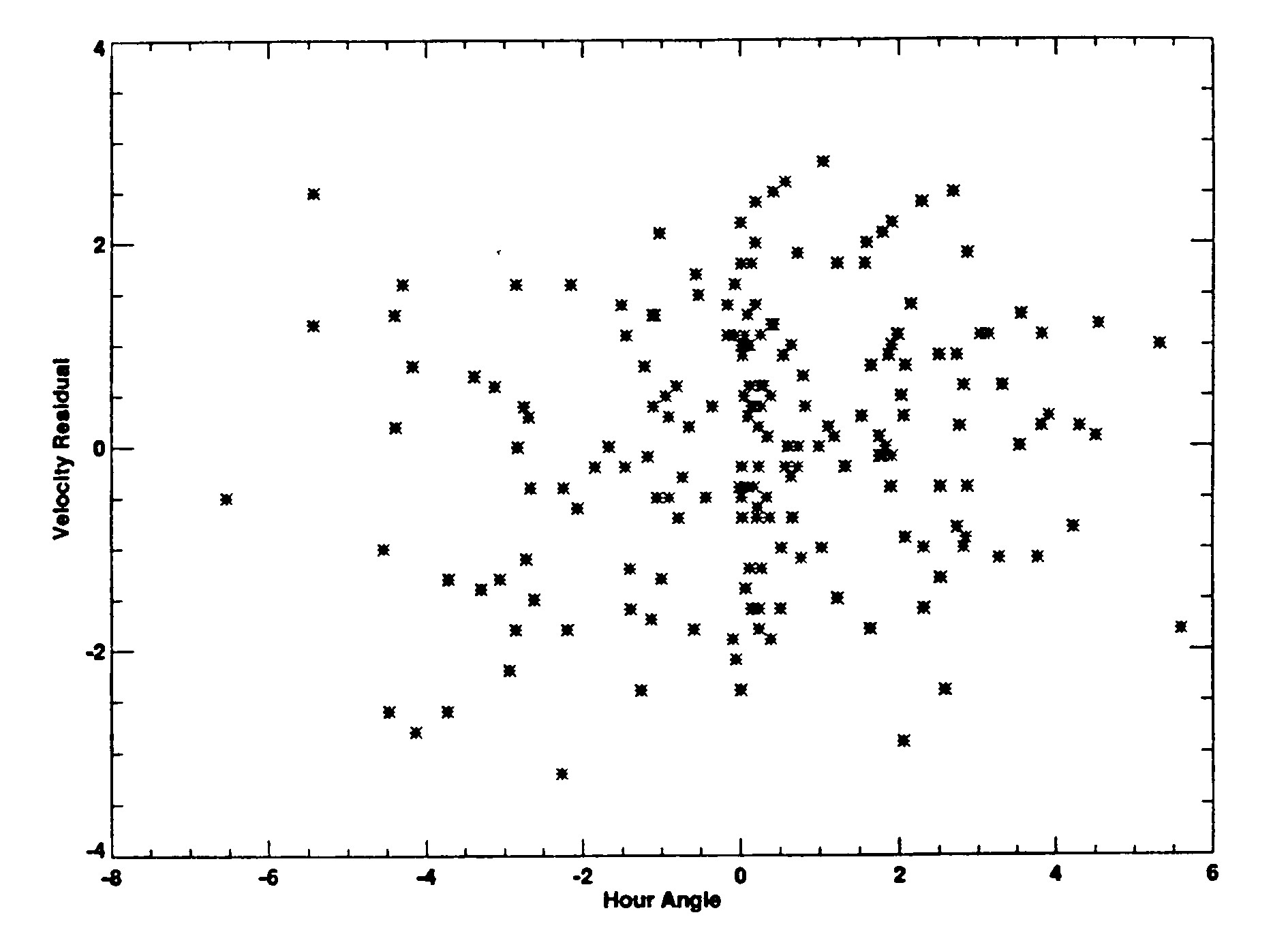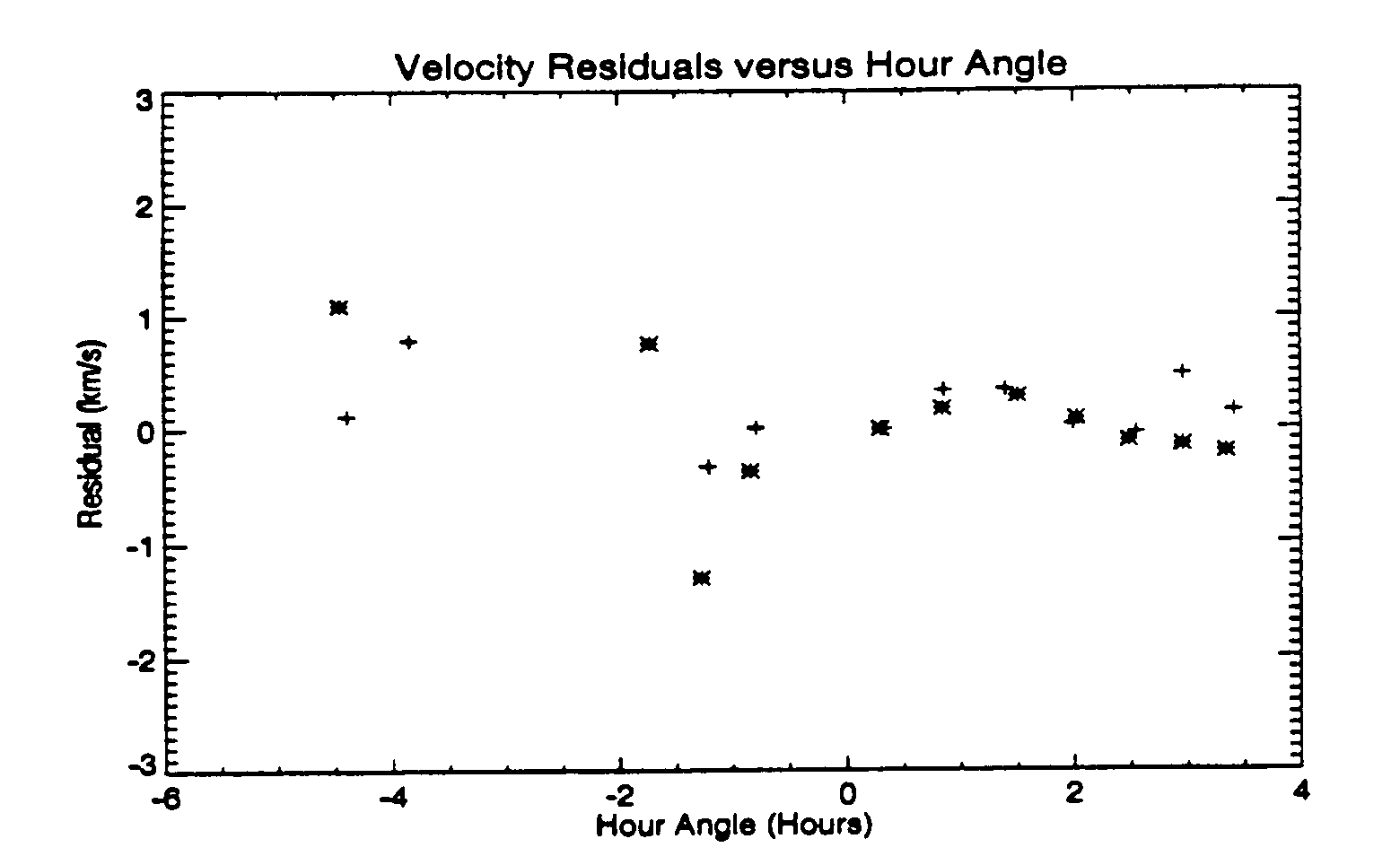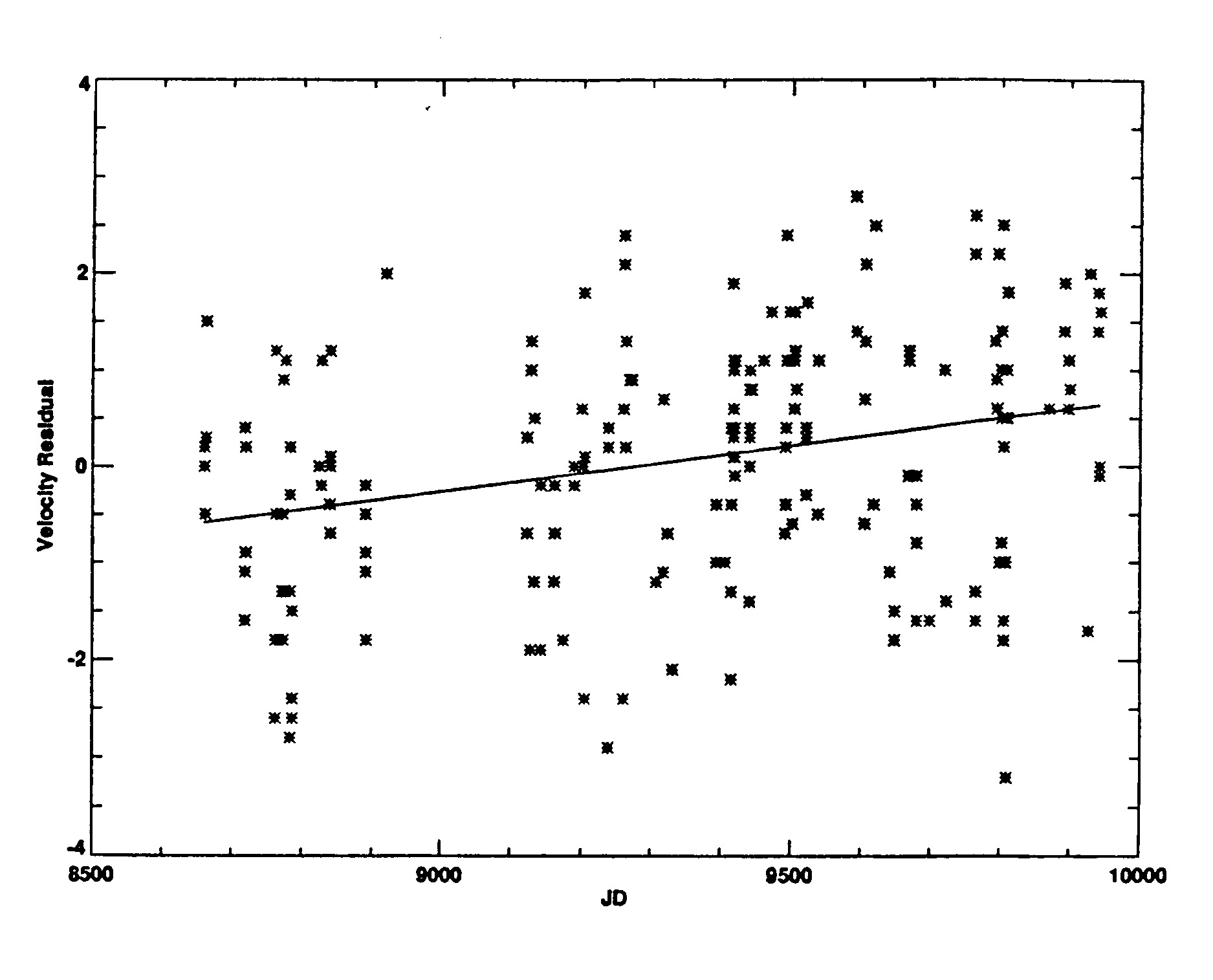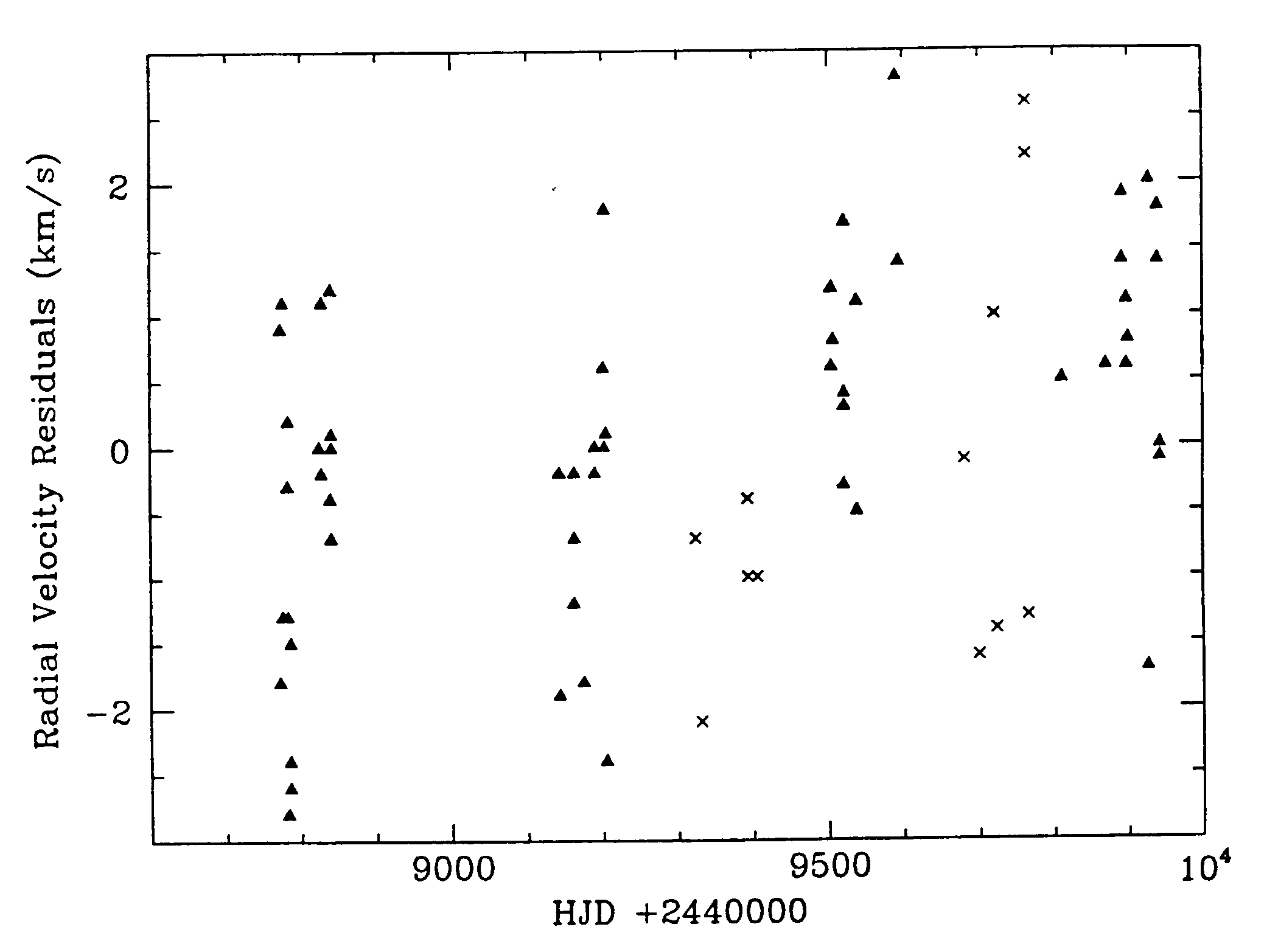
| DDO Home | Astronomy Dept. Home |
|
Introduction: Since 1992 observations of Cepheid variable
stars have been obtained with the David Dunlap Observatory 1.88m telescope.
The aim of the program was to determine binary Cepheid orbits which have
periods of typically a few years. DDO was an ideal observatory to obtain
observations spanning a full season. The program was carried out both by
Ben Sugars as part of his MSc program at York University and also as a
service observing program. Much of the data has been discussed in his MSc
thesis ("Radial Velocity Studies of Classical Cepheids", Sugars, 1994).
Since then additional data have been obtained and additional analysis has
been done. The whole dataset is summarized in this report.
Observations were made with the Cassegrain spectrograph using the 1800 lines per mm grating, resulting in a dispersion of 10.7 A/mm. For the first few months the wavelength range 6530 to 6550 A was used. However, concern over the telluric lines caused a switch to the region from 6300 to 6500 A. Wavelength calibration exposures were taken before and after each stellar spectrum with an iron-argon source.
The detector was a Thomson CCD chip cooled to -100C with a dark current of 0.01 electrons/sec/ pixel. The 0.250 to 0.300 mm slit resulted in an image on the chip of 200 x 1024 pixels. Spectra typically had a S/N of 150. Exposure times ranged from 5 to 45 minutes.
Data reductions were done with the Image Reduction and Analysis Facility (IRAF) of the National Optical Astronomy Observatory. Radial velocities were determined using the cross correlation program RVSAO in IRAF. More information about the observations and reductions is given in Sugars (1994).
Standard velocity stars from the Astronomical Almanac were observed regularly. The velocities from these stars are listed in Table 1. Using these observations, several tests were made to check the velocity accuracy.
Hour Angle Dependence: Some previous work had suggested that velocity errors might increase at large hour angles. The number of standard star observations in now large enough to investigate this question. Figure 1 shows that the O- C residuals (in km/s) show no trend as a function of hour angle. Furthermore, observations of two standard stars covering a wide variation in hour angle during one night were undertaken specifically to address this question. The two stars chosen are at very different declinations (49° for HD 123782 and 1° for HD 126053) so extremes in direction were investigated. Figure 2 (reproduced from Figure 3.7 of Sugars, 1994) shows no trend as a function of hour angle for these stars.

Figure 1. The Observed minus Computed (O-C) velocity residuals as a function of hour angle. In all figures, velocities are in km/sec and hour angles are in hours.

Figure 2: Velocity residuals as a function of hour angle for the stars HD 123782 (+ ) and HD 126053 (* ). Reproduced from Sugars (1994).
Time: The residuals do have a trend as a function of time, as shown in Figure 3. The linear least squares fit to the data is shown by the straight line: O-C = (-8.9 +/-1.8) + (0.00958 +/- 0.00019)xJD, where O-C is the velocity residual in km/sec and JD is Julian Date - 2,440,000. Before removing the trend, the s.d. per point was 1.27 km/sec. After removing the trend it was reduced slightly to 1.22 km/sec.

Figure 3. Velocity residuals as a function of JD-2,440,000. The solid line is the least squares fit to the data discussed in the text.
Temperature: In order to see whether the velocities have a dependence on temperature, data from June, July, and August were plotted with triangles in Figure 4; data from December, January, and February are plotted with x's. No shift between the two symbols can be seen, indicating that there is no dependence on temperature.

Figure 4. Velocity residuals as a function of JD-2,440,000. Summer observations
(June, July, August) are triangles; winter observations (December, January,
February) are crosses.
Acknowledgements: We thank the director for a continuing supply of observing time. We heartily thank J. Thomson, S. Smith, and J. Harlow for the spectra obtained on the service observing program.
This research was supported by an NSERC grant to NRE and by the AXAF
Science Center NASA contract NAS8-39073.
March, 1996
(html formatted and figures scanned: Rci, Feb'99)